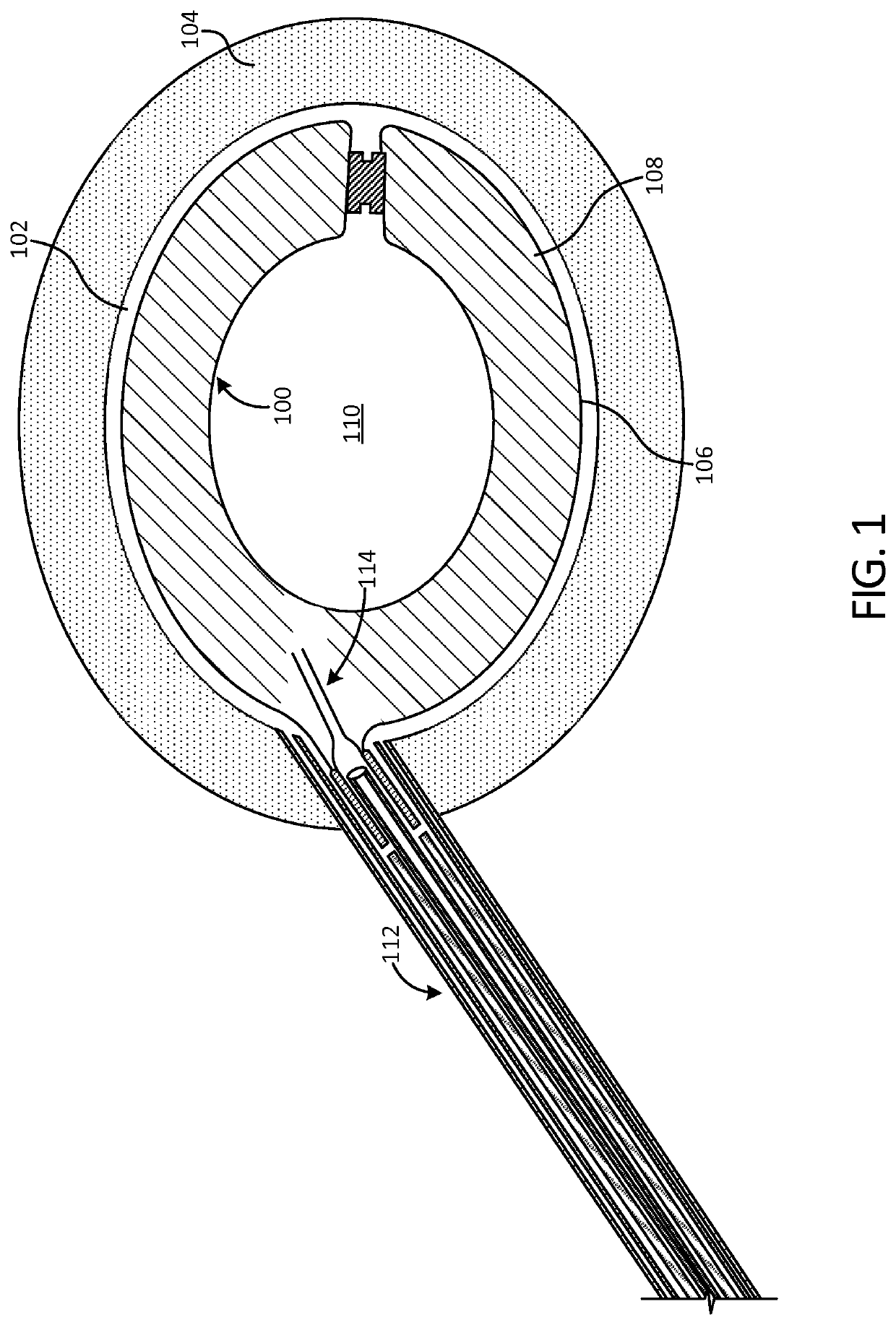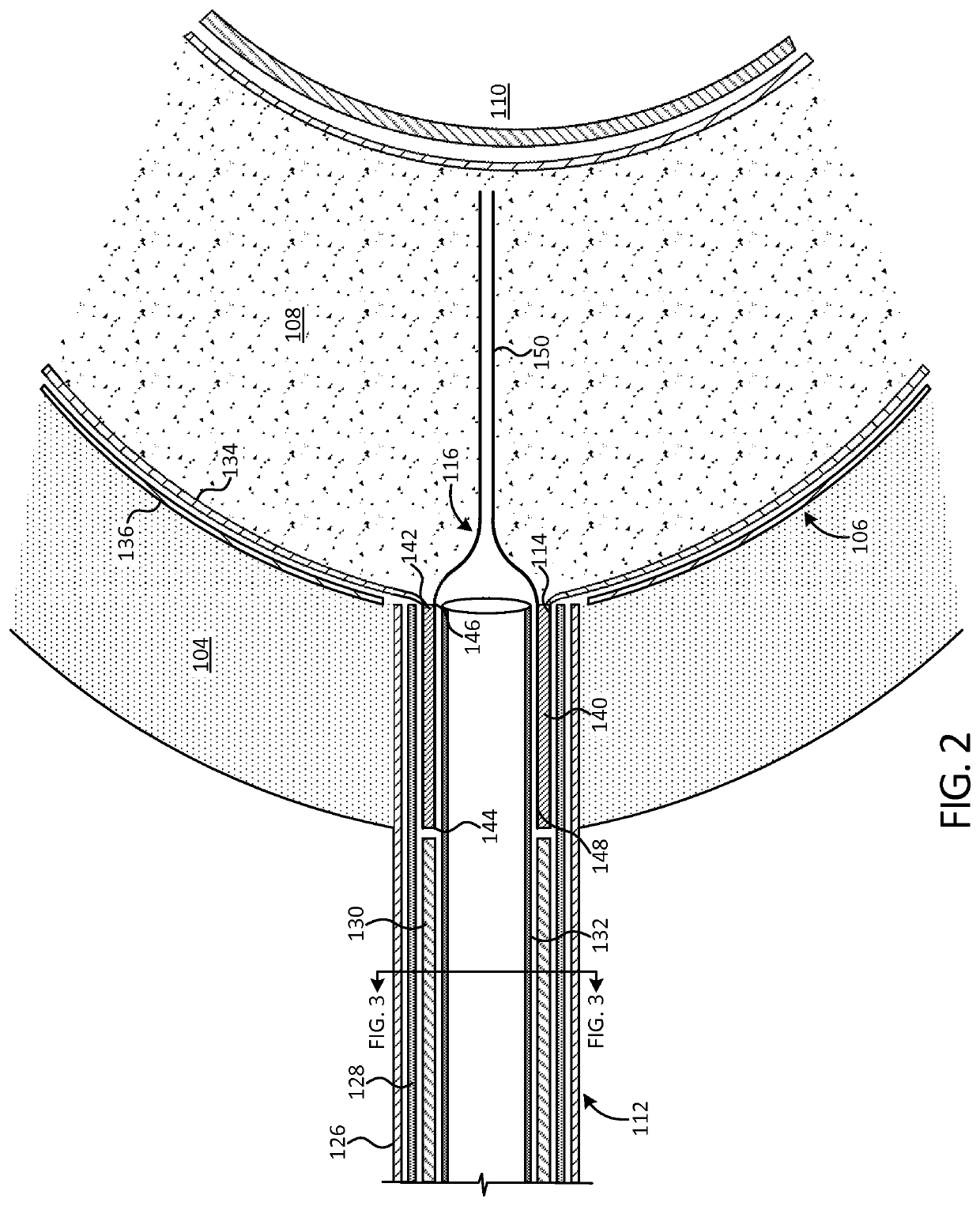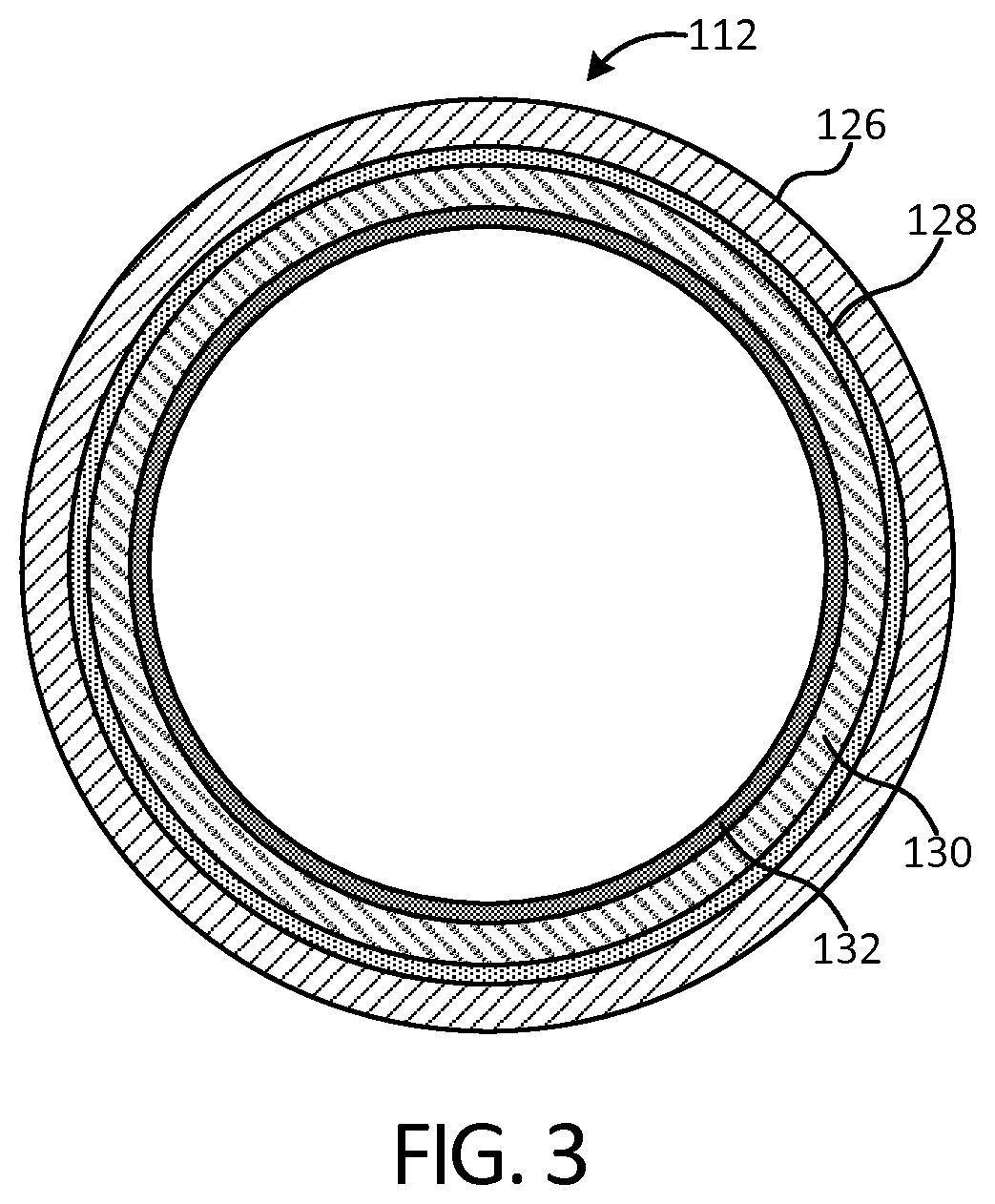Percutaneous implantable nuclear prosthesis
a nuclear prosthesis and implantable technology, applied in the field of percutaneous implanted spinal discs, to achieve the effects of reducing stress, reducing stress, and long working li
- Summary
- Abstract
- Description
- Claims
- Application Information
AI Technical Summary
Benefits of technology
Problems solved by technology
Method used
Image
Examples
Embodiment Construction
[0065]In the following detailed description, reference is made to the accompanying drawings, in which are shown exemplary but non-limiting and non-exhaustive embodiments of the invention. These embodiments are described in sufficient detail to enable those having skill in the art to practice the invention, and it is understood that other embodiments may be used, and other changes may be made, without departing from the spirit or scope of the invention. The following detailed description is, therefore, not to be taken in a limiting sense, and the scope of the invention is defined only by the appended claims. In the accompanying drawings, like reference numerals refer to like parts throughout the various figures unless otherwise specified.
[0066]FIG. 1 illustrates an implant 100 in accordance with an exemplary embodiment of the present disclosure after deployment into a disc cavity 102. The disc cavity 102 is formed by performing a discectomy to remove the natural spinal disc. In some ...
PUM
| Property | Measurement | Unit |
|---|---|---|
| inner diameter | aaaaa | aaaaa |
| outer diameter | aaaaa | aaaaa |
| hardnesses | aaaaa | aaaaa |
Abstract
Description
Claims
Application Information
 Login to View More
Login to View More - R&D
- Intellectual Property
- Life Sciences
- Materials
- Tech Scout
- Unparalleled Data Quality
- Higher Quality Content
- 60% Fewer Hallucinations
Browse by: Latest US Patents, China's latest patents, Technical Efficacy Thesaurus, Application Domain, Technology Topic, Popular Technical Reports.
© 2025 PatSnap. All rights reserved.Legal|Privacy policy|Modern Slavery Act Transparency Statement|Sitemap|About US| Contact US: help@patsnap.com



